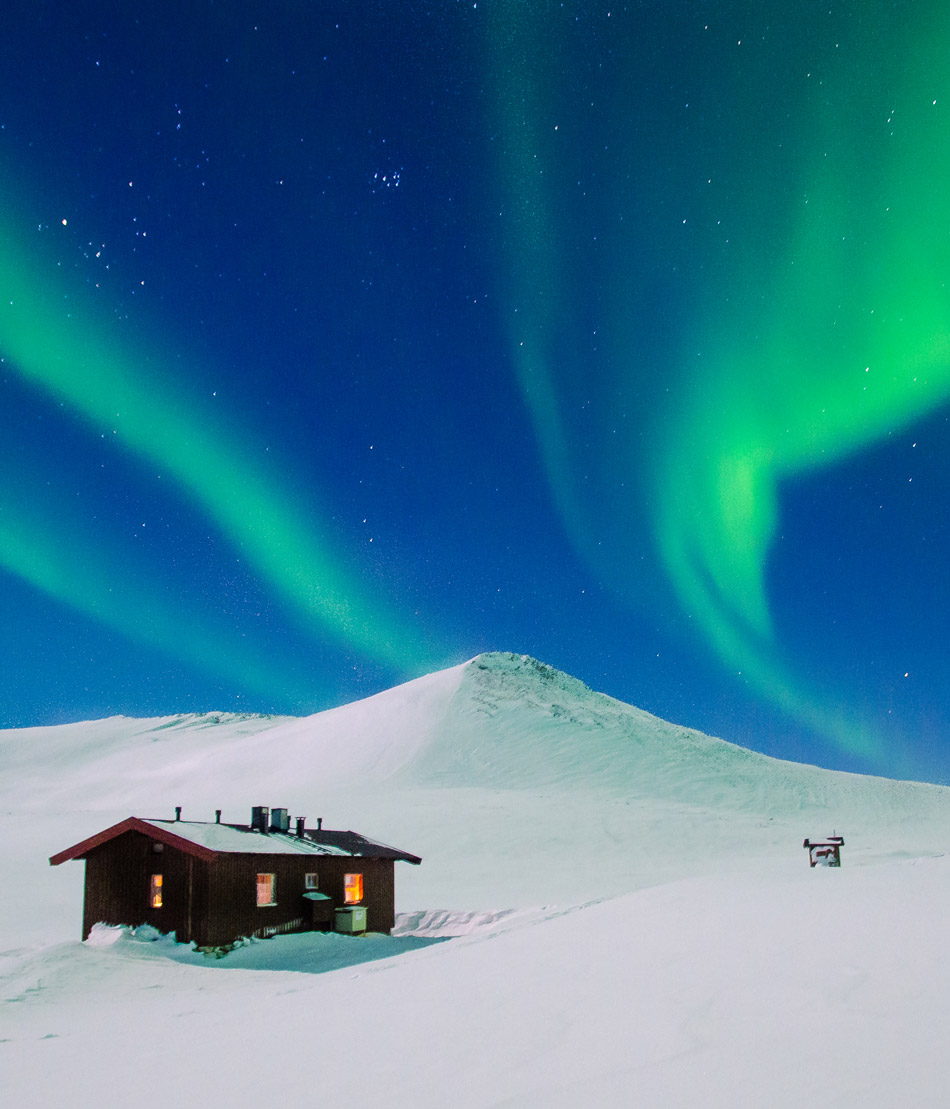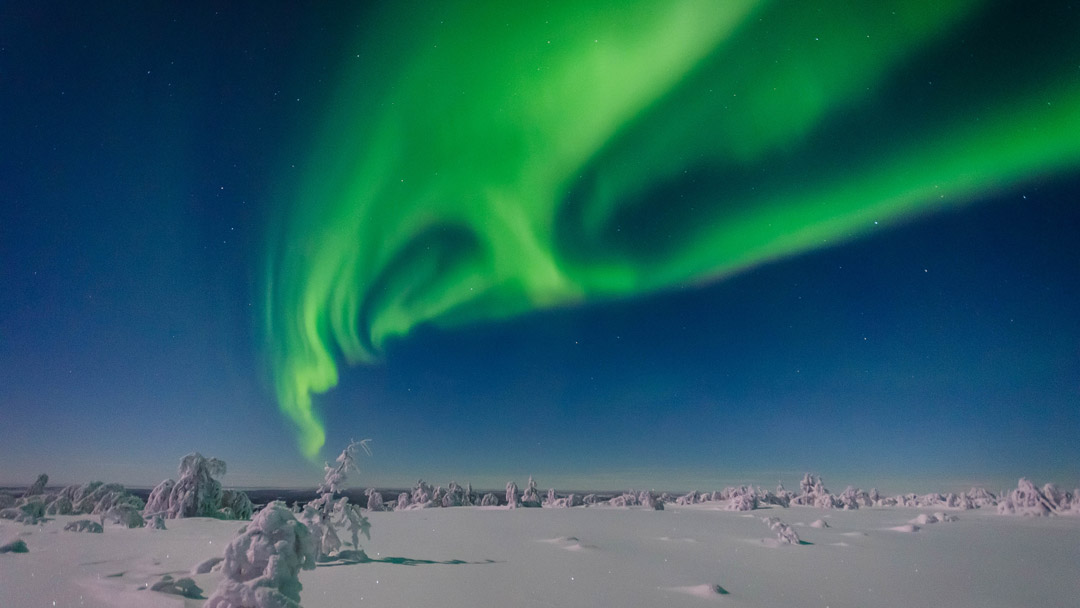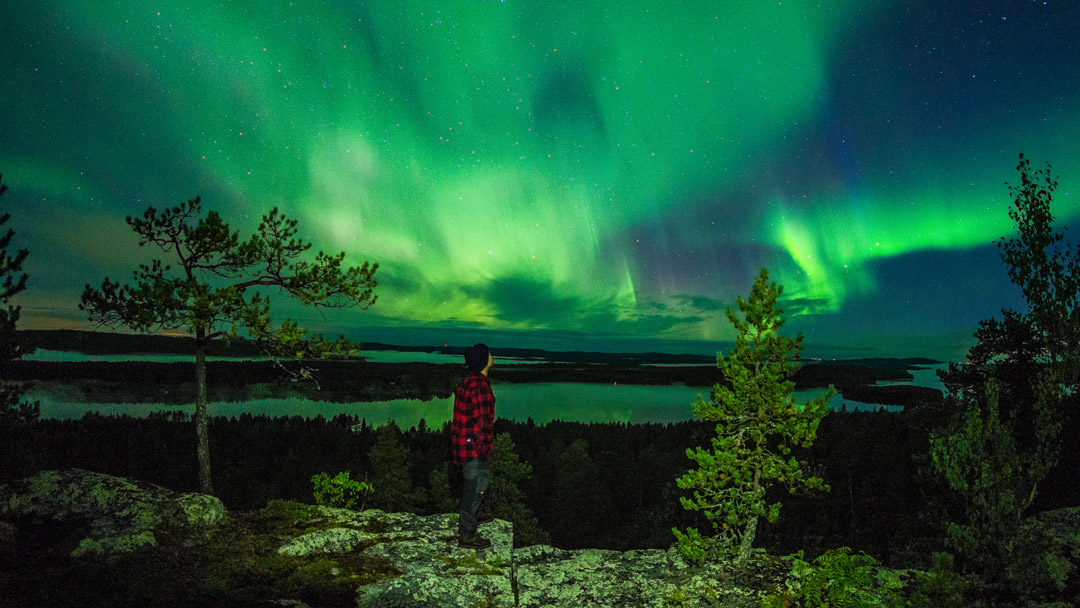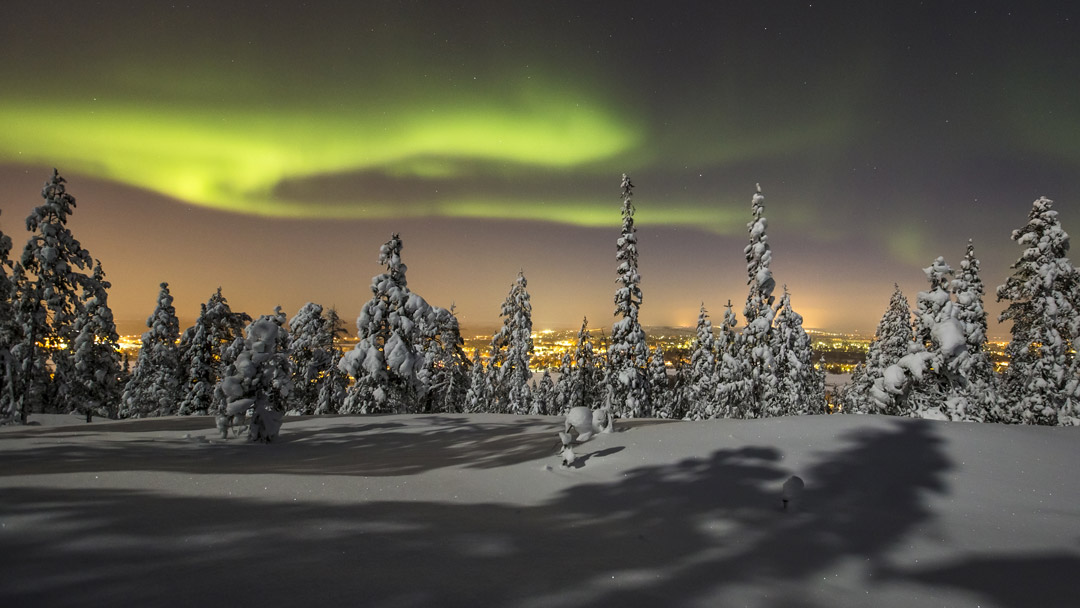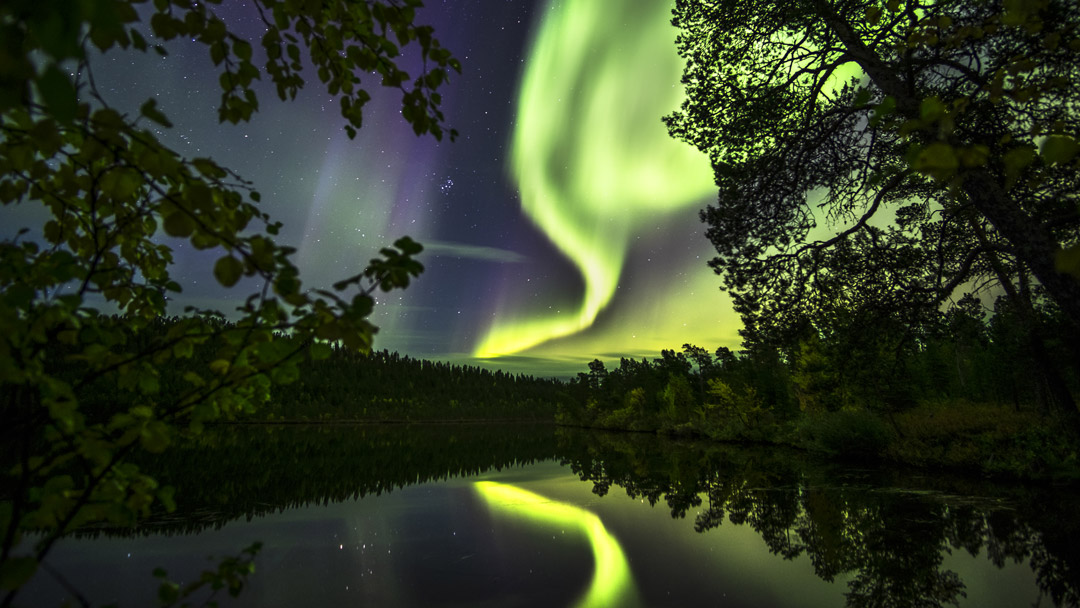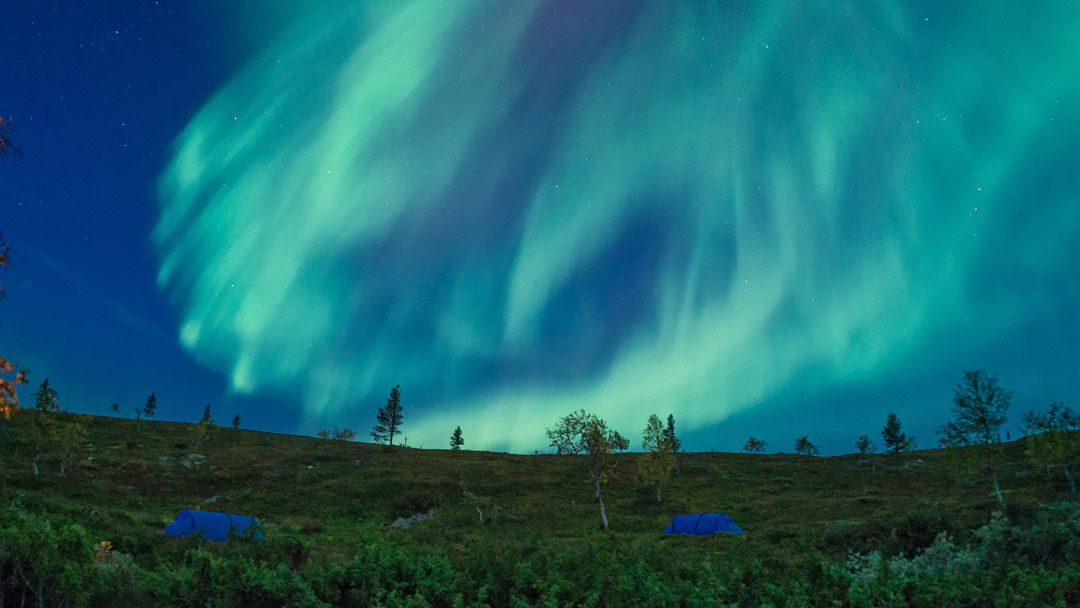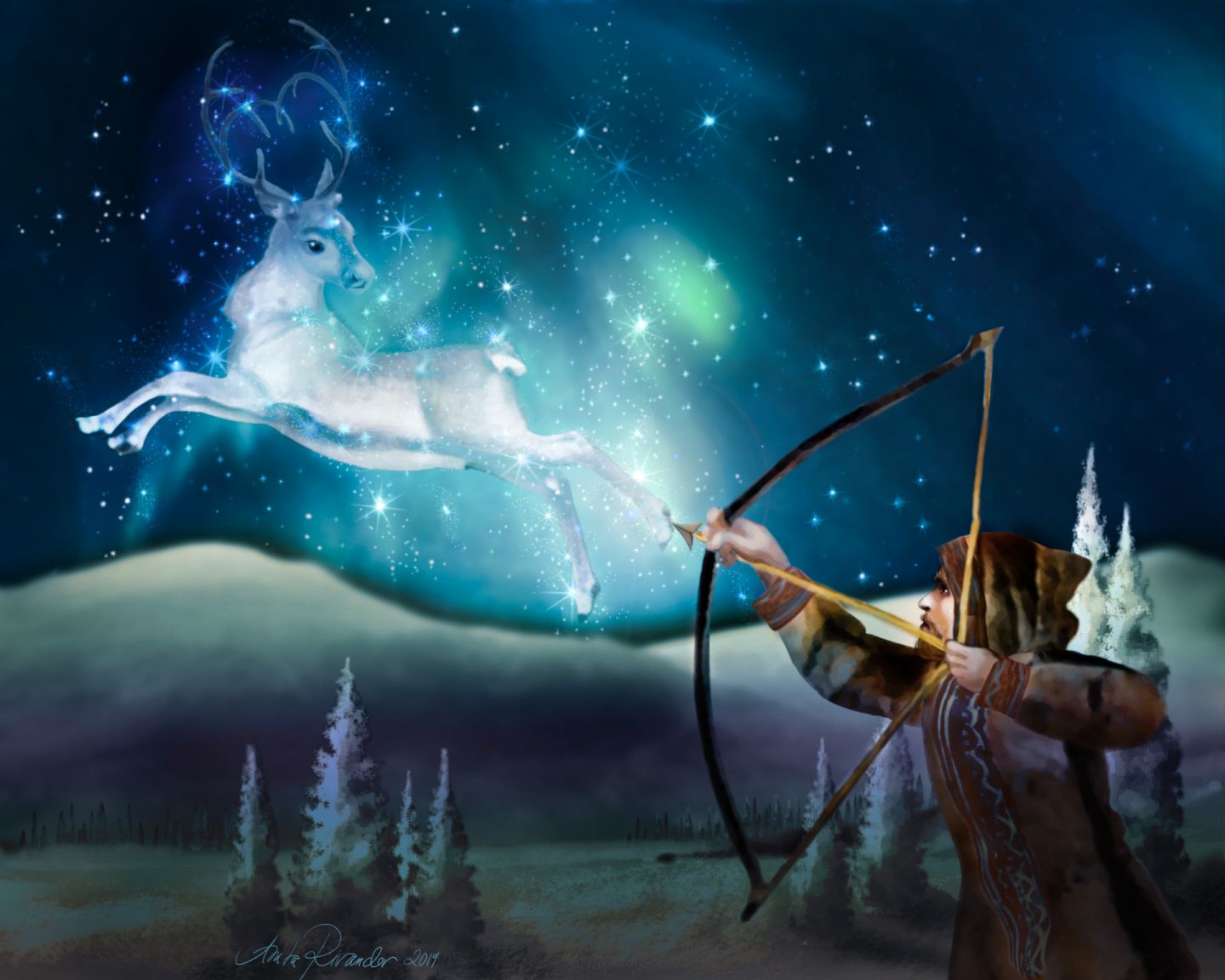What are the Northern Lights? Where’s the best place to see them? What the hell is a firefox? We’ve gathered all the best Northern Lights info right here.
Some time in late August, the sun finally dips far enough below the horizon that stars once again appear in the skies above Finland. And with the return of the stars comes one of the north’s most magical experiences: the Northern Lights. These silky dancing specters, also called aurora borealis, appear as green or violet sheets swaying silently (or crackling softly, depending on who you ask.) Caused by storms sent from the sun itself, seeing the Northern Lights is a transformative experience, a gift from the cosmos itself. There’s the you before you saw the aurora borealis, and the you after.
Read on for more information on the magical Northern Lights.
Where can you see auroras?
It’s all about that latitude, baby! Aurora borealis (and its southern sister aurora australis) are phenomena that really only appear in the skies near the North and South Poles. In the southern hemisphere, it’s a privilege almost entirely confined to the frosty plains and mountains of Antarctica. Up north, however, auroras grace the heavens above Alaska, northern Canada, northern Scandinavia, and Russia.
Experience the Northern Lights and other awesome Arctic phenomena with Virtual Lapland.
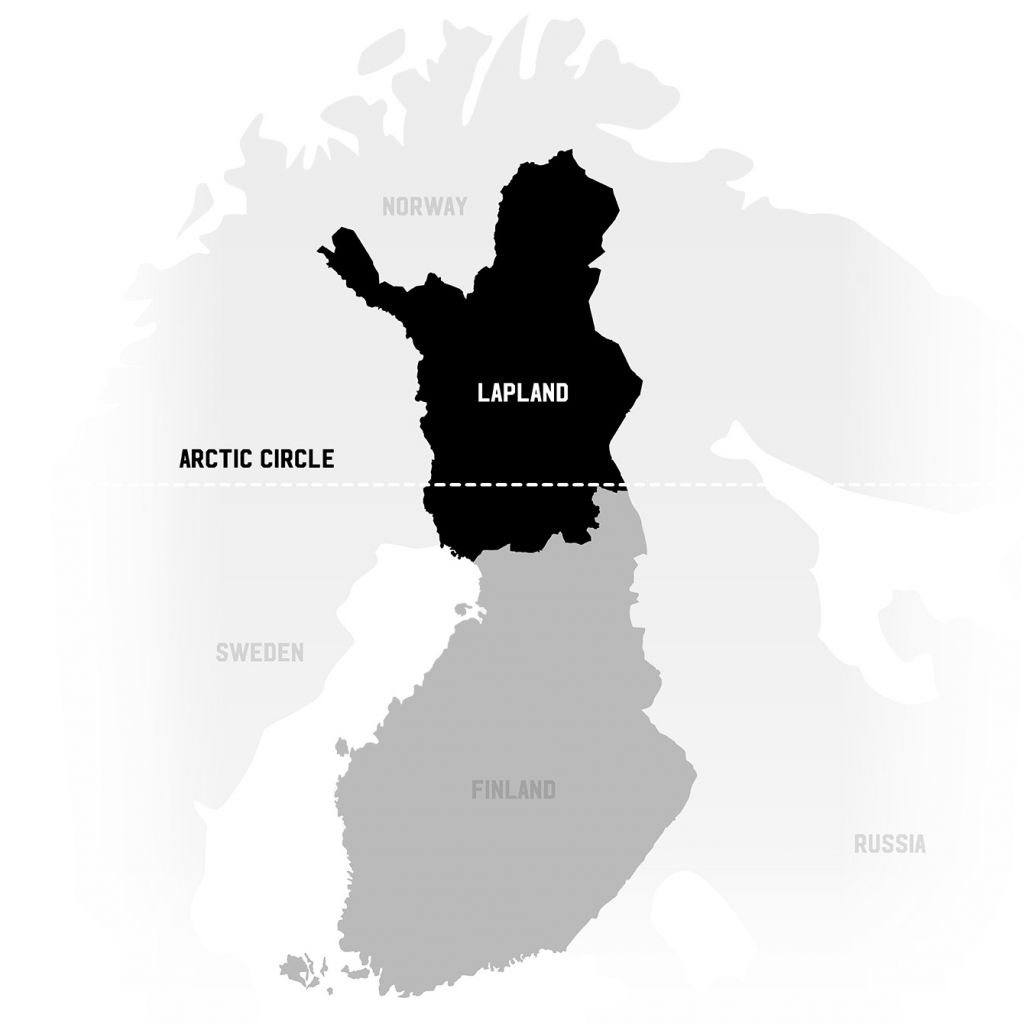
Look Northward!
As Lapland lies almost entirely above the Arctic Circle, the Northern Lights are familiar sights in our dark skies. Utsjoki, being the northernmost region of Lapland, is the best place to see the wistful waltz of the Northern Lights.
But auroras regularly appear everywhere in northern Lapland, whether you’re in the city streets, standing on the shores of the Bothnian Bay, or even amid bustling ski resorts.
Check out the best places to see the Northern Lights in Lapland.
Where do Northern Lights come from?
The easy answer is magic. The more complicated answer begins in the heart of the sun, where particles are formed by intense nuclear reactions. Eventually, these particles are fired from the sun during times of high solar activity. These electrically charged particles are flying along, and most miss the Earth entirely, but a lucky few are destined for our blue planet.
Global warming & Northern Lights
How does climate change affect Northern Lights? Fortunately, not much. As the auroras are created by interactions between solar particles and the oxygen and nitrogen in the atmosphere, there’s not much we can do to change that. However, the worsening weather events and difficulties in forecasting could make aurora hunting much more difficult in the future.
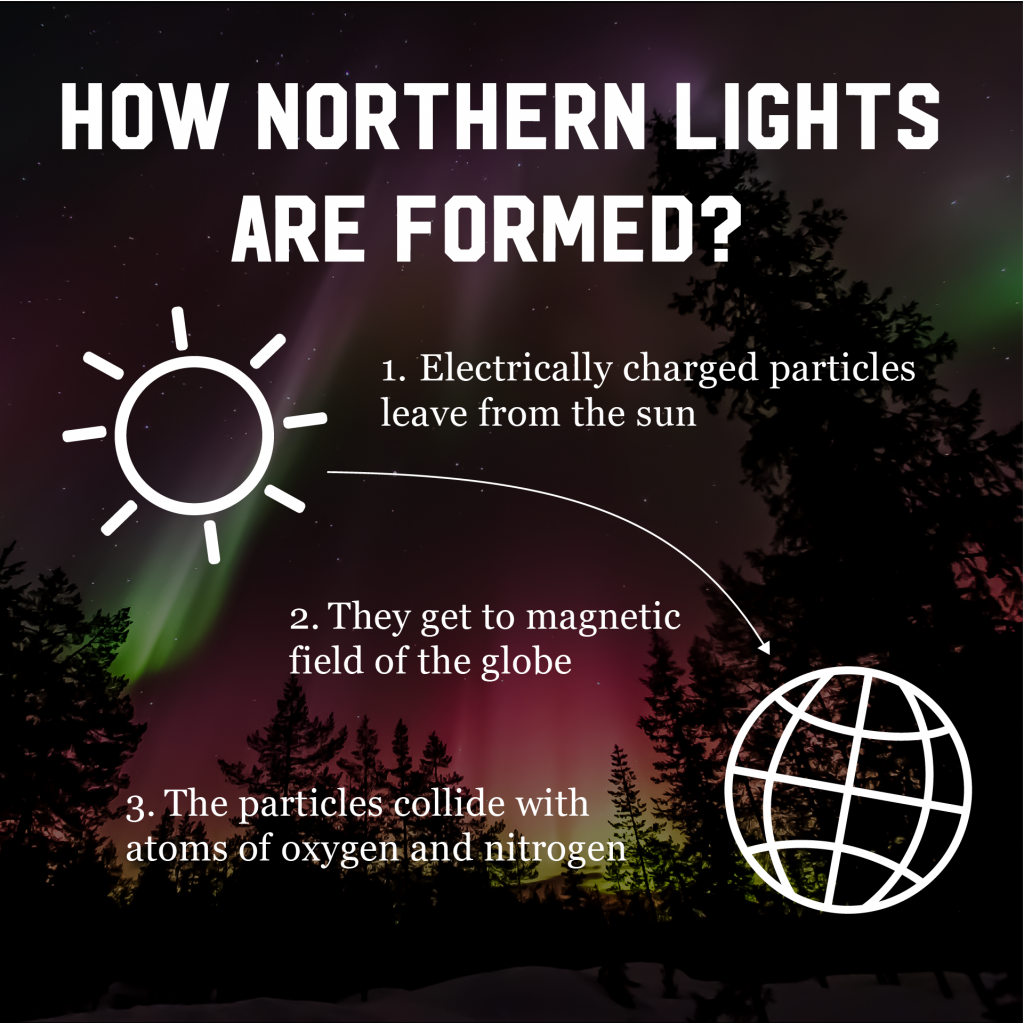
fire in the sky
When they reach the upper atmosphere, they interact with charged particles of a more Earthly origin. Their meetings create dazzling light shows, which we get to see as breathtaking auroras.
Find out more tips for your Aurora hunting in Lapland from these articles:
Read more about the myths and science of Auroras and listen to the magical sounds of Lapland
The color and the sound (of the Northern Lights)
But occasionally, oxygen will get really excited and pop off a red lightshow. In exceptional times, these powerful red auroras have even been seen as far south as the Caribbean! (One such geomagnetic storm in 1859 disrupted and destroyed telegraph systems across Europe and North America.)
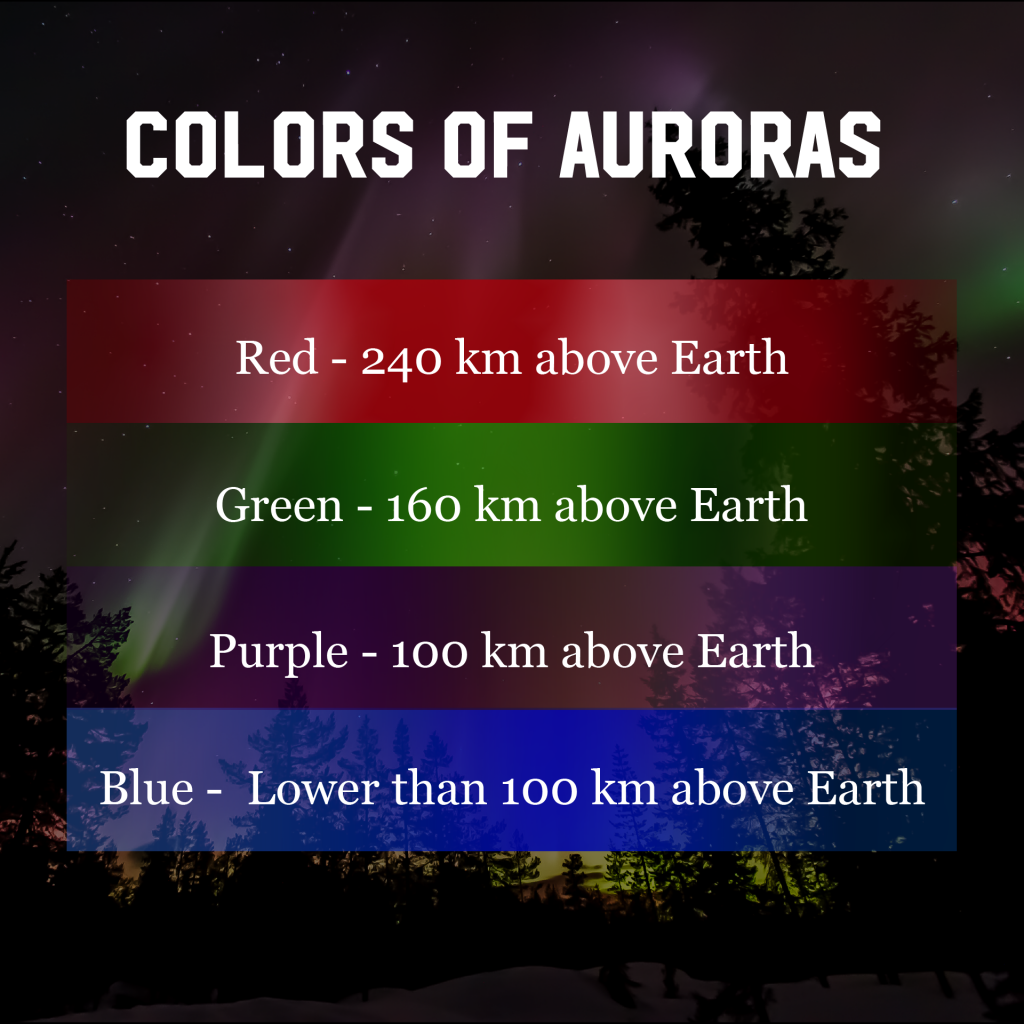
midnight rainbow
Most commonly, those particles from the sun interact with oxygen. This causes the oxygen to shoot out a greenish-yellowish light. That’s why we see most auroras as green. Another common color is violet, which comes from nitrogen in the atmosphere.
But what does an aurora sound like, you ask … That’s a good question, one only recently answered by Finnish scientists. Though reports of auroras crackling or rustling were long considered folklore, in 2012, researchers observed sounds emanating from the air as a result of auroras. It’s not common, but if the daytime weather is just right, you might hear something even rarer than the auroras themselves.
Etymology and myths of auroras
The etymology of Northern Lights should be pretty obvious, but what does aurora borealis mean? It comes from Latin, Aurora being the goddess of the dawn, and borealis meaning north.
Considering their name comes from the gods themselves, it’s no surprise there are many myths and legends surrounding the auroras. For example, a baby conceived under the Northern Lights will be beautiful and lucky. Auroras can be the spirits of the dead, or fire caused by the tail of the mystical firefox, or magic spells cast by the unseen forces of light and dark. And those are just the myths told in Finland!



